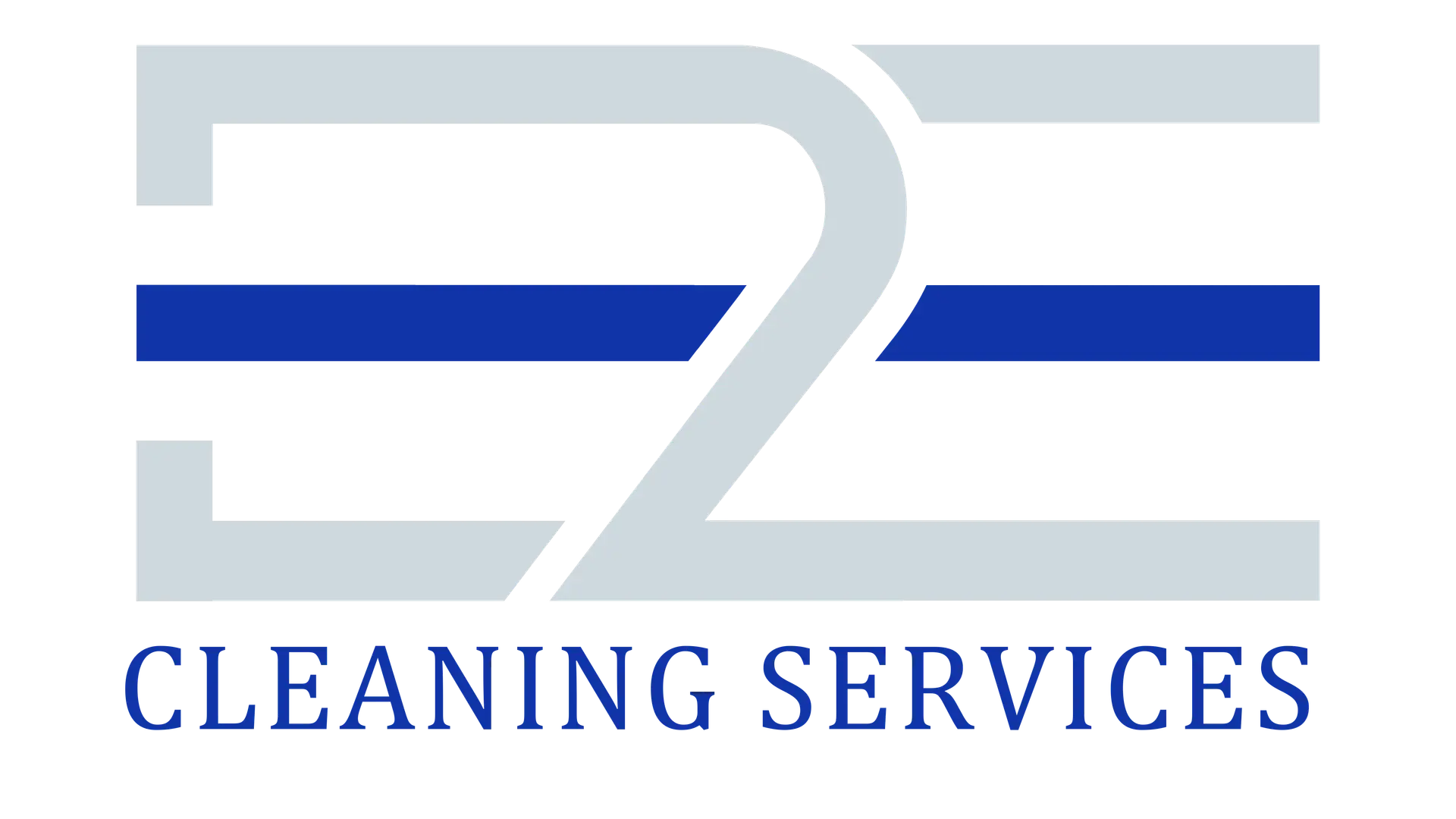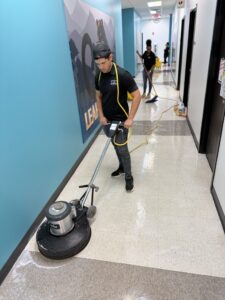This is an in-depth analysis of the strategic value of day porter services to the Florida facilities in hard summer months.
This guide describes the benefits of day porter services in meeting real-time maintenance demands and how they may be customized to meet the specific needs of different types of facilities, and presents implementation plans, ROI analysis, and best practices that can be used to improve facility cleanliness and operational efficiency during peak season.
Introduction: Florida’s Summer Facility Management Challenge
The summer months in Florida between May and September pose special challenges to the facility management across the state. High traffic of visitors coupled with extreme weather conditions and high standards of cleanliness exert an increased pressure on retail centers, hotels, and other customer-facing facilities. When compared to off-peak months, summer tourist inflows can boost foot traffic by up to 30% and 40%.
These pressures are aggravated by weather conditions. Humidity, which is usually above 90%, encourages rapid growth of molds and thunderstorms in the afternoon bring water and debris into entrances and common areas. Moreover, the beginning of the hurricane season also implies some extra maintenance duties, since the properties should be able to respond to any unforeseen events quickly.
Here’s the maintenance paradox: when your facility is busiest and needs the most attention, traditional cleaning schedules leave you most vulnerable.
Conventional after-hours janitorial services can’t keep up with high-occupancy demands. Problems accumulate throughout the day, affecting customer experience and damaging your reputation when it matters most.
The combination of all these factors makes summer the perfect time to consider day porter services as a strategic investment rather than an operational cost. Day porter programs offer round-the-clock visible maintenance that would mitigate the unique environmental issues in Florida and improve visitor experience in the peak revenue-generating months.
Understanding Day Porter Services
Day porter services and conventional janitorial services aim at ensuring that the facilities they are servicing are clean. But the means by which they seek this end are very different. They have the same ultimate goal, but their approaches are different, their planning, and the range of their duties are different.
Despite the fact that both paradigms end up serving the same purpose of cleanliness, they are greatly different in terms of their methodology of operation, their areas of focus and the type of work they do.
In its simplest form, day porter service is the delivery of constant, visible maintenance during the course of normal business hours. Unlike the conventional janitorial crew that operates during off-peak hours, day porters operate on facilities when they are still in use and this enables them to respond promptly in case of spills, trash build up, bathroom problems and other related problems that may arise during the time of operation.
Day porter services are much more than basic cleaning. Day porters take up a wide range of duties, which include:
- Constant surveillance of areas with heavy traffic like lobbies, entrances, and washrooms
- Immediate response to spills and other possible safety risks
- Active trash disposal and bin maintenance
- Minor light maintenance duties such as replacement of light bulbs or carrying out light repairs
- Refilling of restroom consumables during the day
- Keeping the outside appearance such as entryways and smoking areas
- Acting on special requests that are initiated by facility management or tenants
The difference with the conventional janitorial services is both in timing and in approach. The janitorial crews usually perform all-inclusive, scheduled cleaning tasks at night, using standardized checklists. In comparison, day porters work on business hours, but have the flexibility to meet the needs as they arise, and focus on issues that may pose a threat to the customer experience or safety.
This model of constant maintenance acquires particular significance within the harsh climate of Florida during the summer. Instead of allowing problems to pile up on a busy day, day porters maintain high standards even when the place is under heavy usage, and so every visitor gets a good first impression, regardless of the time they arrive.
To facility managers, this shift in maintenance patterns of reactive to proactive will mean the solving of minor issues before they can mushroom into larger issues that will require deeper interventions.
Protect your reputation with consistent facility maintenance. Click Here
Service Customization for Florida Facilities
Florida’s unique environment demands day porter services that go beyond one-size-fits-all solutions.
The best programs use specialized protocols tailored to our climate, your facility type, and seasonal demands.
Effective Florida day porter services are based on climate-specific protocols. Professional providers develop individual strategies in:
- Humidity control: Florida has high humidity which promotes the growth of molds and mildew especially in bathrooms, entrances and places that have water features. Good day porter programs involve regular checks of moisture prone regions, use suitable drying methods, and antimicrobial treatments to avert biological growth.
- Rain and storm response: Summer afternoon thunderstorms bring about abrupt water, debris, and foot-traffic related soil influxes. Day porters also use quick-response procedures in the maintenance of entryways, including placing extra matting during storms and mopping frequently to remove slip hazards.
- Heat factors: Extreme temperatures affect the cleaning chemicals and cause more odor formation in waste zones. Day porters working professionally adjust the use of chemicals to the temperature and raise the frequency of waste management in hot months to limit the odor.
In addition to climatic factors, efficient customization is also sensitive to needs of facilities of different types of properties:
- Office buildings: Pay attention to the maintenance of professional looks in lobbies and other common areas, control the state of conference rooms between meetings, and keep restrooms stocked and presentable during business hours.
- Retail centers: Pay special attention to the cleanliness of the entrances, the food court area, and the promptness of the response to spills that may cause safety issues or an unpleasant impression of the guest. It is necessary to pay special attention to fitting rooms and display rooms at the time when there are many people.
- Healthcare facilities: Use special infection control measures, such as increased cleaning of frequently touched surfaces and appropriate management of regulated waste. The regulations that are healthcare-specific should be observed, and a welcoming atmosphere should be provided.
- Educational facilities: Adjust coverage based on class schedules, focus on between class cleaning of common areas and meet cafeteria requirements during meal times. The programs should also come up with certain protocols to deal with the peculiarities of student-occupied areas.
The effective day porter programs in Florida recognize that service needs are seasonal. Staffing, hours and focus on high-visibility areas may be increased during peak tourist months. Other facilities have seasonal service contracts that increase coverage in the summer months and reduce coverage during low periods.
Task Prioritization Strategies
To have the greatest impact on the least amount of resources, day-porter programs must be based on a system of prioritizing tasks. The modern trends have replaced the rigid schedules with the categorization of the maintenance activities into levels, based on the visibility, safety, and operational effects.
Emergency maintenance work requires urgent attention and has priority over normal work. These include:
- Spillage of liquids in the traffic zones that pose instant slip risks
- Problems with the restrooms (clogged toilets, empty paper towels)
- Problems with the entrance condition, especially in bad weather
- Garbage spillage in the streets
- Doors of main entrances smudged with glass
- Food waste in eating places
- Safety risks that should be mitigated immediately.
The routine maintenance jobs are important but they can be done in a pattern when there are no critical problems. Such activities include:
- Frequent garbage pick up at the right capacity
- Horizontal surface dusting
- Spot cleaning of wall marks
- Cleaning of water fountains
- Spot mopping and sweeping
- Elevator cleaning and detailing
- Surveillance of low-traffic zones
Peak-hour scheduling is an even more detailed version of this method which involves matching resources with facility usage patterns. Traffic pattern analysis is done by professional day-porter programs to determine peak traffic times and areas and staff accordingly.
This may comprise:
- Morning attention to overnight problem solving and entrance preparation to incoming traffic;
- Lunch time focus on bathroom cleaning; and
- Afternoon care of wear and tear in principal traffic districts.
Meetings, conferences or sales events also need event-specific coverage.
The last element of effective task prioritization is emergency response protocols. Well-rounded day-porter programs define specific processes of dealing with unexpected events like:
- Spills that involve biology and need special cleaning procedures
- Intrusion of water due to plumbing or weather conditions
- Emergencies (large groups, sudden crowds)
- Facility-wide effects that need immediate action (loss of power, evacuation clean-up).
The implementation is usually done by having clear communication between the facility management and the day-porter staff and this is often done using mobile technology where issues can be reported in real time and tracking of the resolution.
There is a trend towards the inclusion of data collection in modern methods in order to detect the presence of a recurring problem so that a proactive solution can be implemented instead of a reactive one.
This dynamic prioritization is especially useful to Florida facilities with significant seasonal variation, because it allows resources to move according to real needs, and not according to pre-planned schedules that may not be accurate in real-time.
Peak Season Benefits Analysis
In the heightened summer months in Florida, the implementation of day porter services imparts benefits that are beyond the traditional ideals of cleanliness. Properly planned and executed, such initiatives help to drive organizational goals through improving the customer experience, protecting business continuity and enhancing brand integrity.
The most apparent outcome is increased customer experience. Research has always shown that the cleanliness of the facility has a great impact on consumer behaviours and perceptions.
A national retail study found that 8 out of 10 shoppers would not shop at stores that are considered dirty and 3 out of 4 customers have a negative experience when they come across dirty restrooms. Day porter services directly address these issues by the following:
- Keeping restrooms in a high standard all through the operating hours
- Maintaining clean entrance areas with no debris and weather related soiling
- Responding to spills and accidents early before they expose several visitors
- Creating good first impressions through ensuring that the public areas are maintained at all times
- Giving an evidential demonstration of the commitment of the organization to quality
Beyond immediate cleanliness, day porter services deliver measurable operational benefits.
By addressing issues as they happen, (not after hours) you prevent costly disruptions to revenue and productivity.
The advantages include:
- Avoiding trivial issues to grow into a situation where the entire facility should be closed down
- Decreasing the need to call emergency janitorial services that interrupt operations
- Reducing the risk of slip-and-fall through faster spill response
- Increasing the life of floors by treating stains in time
- Determining the maintenance requirements prior to causing system failures
Brand reputation protection is becoming more important in a time when brand reputation can be made or broken by instant social media feedback. Studies have shown that bad facility reviews tend to focus on cleanliness, and the state of the restrooms is particularly important.
Day porter services thus reduces such risks by:
- Preventing the possible negative events that can trigger negative reviews
- Showing a firm commitment to facility standards
- Giving timely feedback to customer cleanliness issues
- Maintaining a consistent level of brand standards during working hours
- Avoiding viral negative social media posts due to conditions in the facility
In the case of seasonal businesses that are located along the tourism corridors in Florida, these advantages are especially important in the months when the revenues are high. One bad review is enough to influence the booking of dozens of potential guests. Similarly, operating at the same level throughout the high-volume periods has a direct impact on earnings when plants receive the most revenue per hour.
Together, the benefits are not only short-term operational benefits, but also long-term business value. Buildings that develop a reputation of high levels of cleanliness and maintenance are in a better position to charge higher prices, attract better tenants and maintain higher occupancy rates compared to buildings with low levels of consistency.
Conclusion
Day porter services are a strategic investment as opposed to a purely operational cost to Florida facilities facing summer challenges. Organizations can protect brand image, and enhance customer experience and maintain operational continuity in peak revenue times by implementing tailored approaches that resonate with particular environmental, facility-specific, and seasonal factors.
The most effective programs go beyond the traditional cleaning schedules and introduce data-based programs that rearrange priorities based on the real needs of the facility and use patterns. This flexible system allows the distribution of resources to where they can have the greatest effect, and adapts to changing conditions during the challenging Florida summer season.
When facility managers consider their maintenance plans, day-porter services should not be considered only because of their cleaning abilities, but also because of their involvement in the overall business goals. When done correctly, these programs can offer quantifiable payoffs in the form of enhanced customer satisfaction, longer facility life, and safeguarding of brand value, which will eventually lead to both short-term operational profitability and long-term appreciation of the facility asset.






